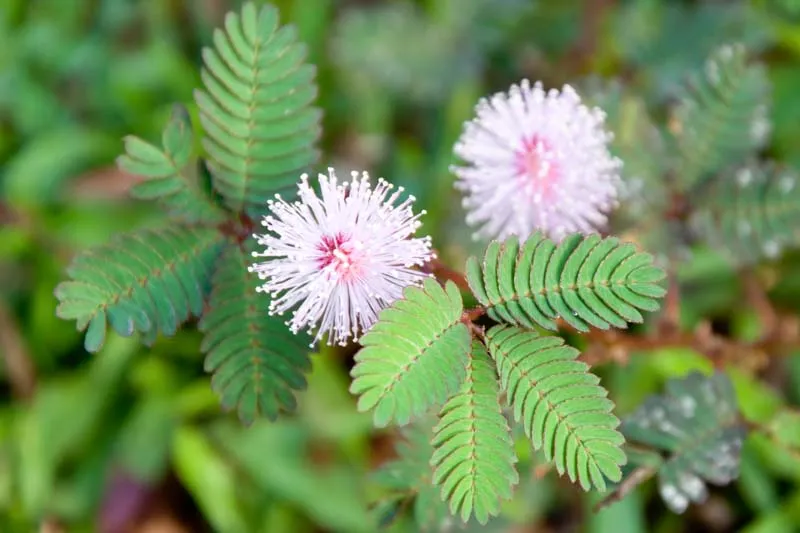Touch Me Not Care
More commonly known as the sensitive plant or touch-me-not plant, Mimosa pudica is a tropical shrub that closes its leaves when touched. It is a popular houseplant due to its relatively easy maintenance and interesting ability to recoil when touched. Here’s how to grow and care for yours.

How to care for your Touch Me Not Plant
- LIGHT
The sensitive plant needs bright light up to eight hours a day. It can even tolerate some direct sunlight. If it doesn’t get enough sunlight, the leaves may close up (one of its triggers) and won’t produce blooms. As a houseplant, an east-facing window is ideal. However, if you lack the proper light, you can supplement with a full-spectrum fluorescent grow light. Outdoors, plant Mimosa pudica in full sun or partial shade (as long as it gets its eight hours of sun per day).
- WATER
This plant likes consistently moist soil but not wet, soggy soil. Too much water can lead to root rot. The best way to keep the soil consistently moist is to plant it in a pot with drainage and water it when the top of the soil begins to dry out. If your Mimosa pudica is planted in the ground, make sure you modify the soil to improve drainage before planting, and water it when the top inch or so begins to dry.
- TEMPERATURE
The touch-me-not plant is a tropical plant that needs a temperature range of 60 to 85 degrees Fahrenheit to sustain healthy growth and produce flowers. Since most indoor environments fall within that range, it’s perfect for a houseplant
- FOOD
Sensitive plants do not require much when it comes to nutrients. However, to give them a boost during the growing season, apply a high-potassium liquid fertilizer diluted to half strength every few weeks.
- TOXICITY
Mimosa Pudica are considered non-toxic and pet friendly.
- ADDITIONAL CARE
Mimosa pudicas grow rapidly and can quickly outgrow a smaller pot. If this happens, re-pot them so they have room to continue to thrive. Be prepared to do this several times a year, depending on the plant.
After repotting, touch-me-not plants may droop, but rest assured, they are resilient and will bounce back! However, if your plant isn’t recovering, you can save the seeds, get rid of the plant, and start the growing process from scratch.
Common Issues for your Touch Me Not Plant
Mimosa pudica can sometimes grow with stems that lack foliage or blooms, giving them a naked and leggy appearance. This is often a result of insufficient direct sunlight. It’s essential to ensure that your touch-me-not plants get at least eight hours of sunlight daily, whether it’s natural or artificial. By doing so, you can prevent the plant from becoming sparse and leggy. Additionally, pruning the plant can help maintain its bushy and full appearance.
A touch-me-not plant’s leaves can turn brown or yellow for a few reasons. It’s important to remember that this plant is indigenous to more humid climates, so dry air can cause yellowing or browning of the leaf tips. If your plant is in a dry room (especially if it’s in a heated room in the winter), try misting it regularly with water to emulate its natural habitat.
On the flip side, overwatering can cause the lower leaves to turn yellow. Insufficient light, nutrient deficiency, and temperatures that are too low can also aggravate the Mimosa pudica and cause the leaves to turn yellow. Ensure that your plant is getting plenty of light and enough fertilizer and is not in an environment that’s too cold for it to flourish.
When Mimosa pudicas start to decline, they can decline fast. However, this is not unusual; touch-me-not plants will decline every year after blooming for the first time. This is a natural process that is part of the plant’s life cycle. It’s best to harvest some seeds and plant them separately, then discard the original dying plant, as it’s highly unlikely to recover.
